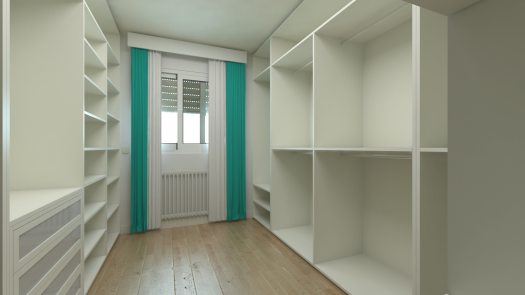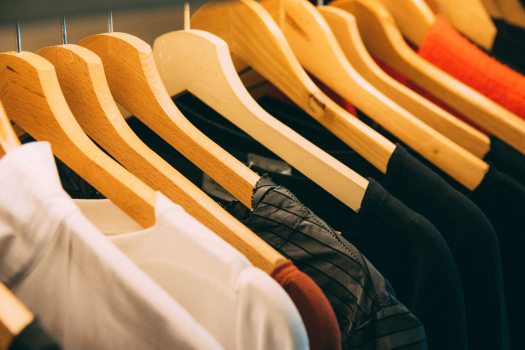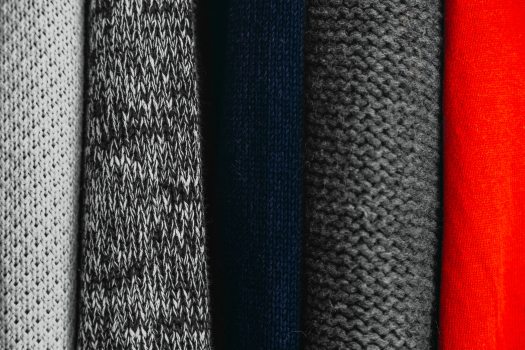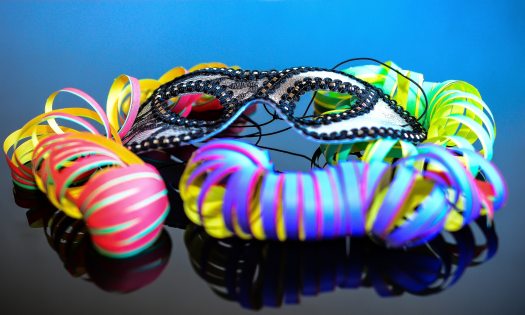Here is the Minimalist Wardrobe I promised I’d write about . In this blog I hope to cover a fair bit of material, so let me lay it out in point form, so you know what to expect before spending any more time reading what is likely going to be a fairly long post. First off, I’ll be addressing the general definition, pros and cons of a Minimalist (or Capsule) Wardrobe (CW). Then I’ll go into the various considerations to keep in mind when establishing your CW, should you decide it’s something you’d like to try. More specifically I’ll briefly cover staples (or core wardrobe essentials), style, climate, lifestyle, body type, taste, and color palettes, sorting, practical issues, exclusions, and other details.

What is it?
Basically it’s an attempt at simplifying one’s life, by getting rid of surplus clothes that are taking up space in your closet, which are wasting your precious time whenever you need to decide what to wear, and when you need to move them, sort them, wash them, etc.. It is estimated that most women in North America (and probably in other continents as well) own an average of 115 pieces of clothing, about 30% of which are new (with tags still attached) and about 40% of which we rarely use, leaving us with really 30% of items of clothing that we actually like and wear on a somewhat regular basis. This brings the number of necessary purchases down to about 35 pieces of clothing. This is the number most proponents of CW suggest, some place the number at 24, others closer to 40. The number isn’t all that important, what matters is the fact that most women, and you might be included here, purchase a lot more clothing than they wear, wasting money, feeding the fast fashion industry (learn more about the fast fashion industry here), and adding to needless consumerism (here’s a pretty thorough overview), and spreading what’s been dubbed affluenza (read more about affluenza here). If this is something you see in your life, and it bothers you, then you might want to consider a CW.
Considerations
There are a few considerations to keep in mind before you decide to go the CW route. First of all, does your lifestyle permit you to drastically cut down on your clothing possessions and purchases? If you work in the fashion industry, or are expected to wear something new and original on a regular basis, then a CW is going to prove nearly impossible. If you wear several hats and each one requires a different style of clothing, a CW just won’t be very practical for you (say you work in an office in the morning, you run an afterschool progam in the afternoons, and you work in a restaurant at night, you might need a different set of clothing for each job). If you are pregnant, you might want to consider a CW for your pregnancy and post-pregnancy look as well, the temporariness of your body shape might encourage you to minimize the number of items you wish to purchase for this brief period. But if you know you go through a lot of clothes because they simply get too ruined to be able to use for extended periods, then a CW might not be for you. If you’re simply not ready to forego your shopping sprees, and you adore having a constantly changing wardrobe, then the rest of this blog won’t be of much interest to you.

There are pieces that can be dressed up or down fairly easily, so a variety of uniforms doesn’t necessarily have to be an impediment to building a workable CW, but it does require a lot of thought. Just so you rest assured, athletic wear and evening wear (ceremonial gowns, cocktail dresses, and the like) don’t have to be included in your capsule wardrobe, neither does underwear (meaning everything you wear under your regular clothes), nor does footwear, or accessories. Of course, if you find that you’re going overboard with footwear and accessories, it might be a good idea to cut down on those, but you don’t have to include them in your CW number.
Pros and Cons
The disadvantage of having a CW is that you’ll have a lot less choice, so you’ll have to pick your items very carefully. Depending on how you look at it, this could actually be an advantage, as you’ll be unable to waste as much time trying to figure out what to wear every morning. Another disadvantage is that your clothes will have to be of good enough quality to last you the whole season, and you’ll have to take good care of them so as to keep them wearable. The flip side of this is that you won’t be wasting money on fast fashion clothing that goes through a long line of workers, leaving the actual seamstresses with barely enough to live on. Buying good quality, ethically made clothing means you’ll be encouraging businesses with fair trade practices and discouraging sweatshops. It’ll also mean you’ll be less drawn by fashion changes, and lean more towards classic looks that last longer, as your clothing will be worn for longer as well. This will automatically lead to less surplus garbage, and hopefully, eventually less pollution as well. Perhaps most directly relevant to you is that you won’t be as tempted to buy clothes that don’t fit into your capsule, so you’ll spend less money for things you don’t need, and less time looking through clothing racks.

Ideally, a CW leads to a more conscientious consumer, who appreciates what she has, how it’s made, and she actually uses it more. Even if you decide not to fix a determined number for your CW, I think most of us can benefit from a little simplification, and a bit more appreciation.
What should you consider for your CW?
First of all you need to take into consideration the weather in your country of residence. Do you have four very distinct seasons? Then you should have four very distinct CW, one for each season. I live in a climate that has one really long season, two that transition into and out of it, and a very short one. This means that most of my clothes can be worn for three seasons, in layers, with a small number dedicated to the coldest months, and a small number just for the hottest weeks. There are climates that are clearly defined into only two seasons: the wet and the dry, with temperatures fairly stable throughout the year, this calls for two CW, with most of the clothing spanning throughout the year and a few items specialized for wet and another few dedicated to the dry weather. You get the idea. You can establish core pieces, or staples based on your style, your uniform (what you wear for work), your lifestyle, and what suits you best (color, fabric, and shape). These are most useful and versatile if you keep them in your favorite neutral colors, and you can work around them with other, more colorful pieces. You can read more about this under the Color Palette section and beyond. Honestly, unless you’re a chameleon, there likely are colors that clash with you, so it would be wise to look into this subject a little further.

Style
What’s your life style? Are you an outdoorsy person, do you cycle to work, have a long commute, or walk to work rain or shine? Are you required to wear formal attire at work (dress pants, buttoned blouse and jacket), or are you more flexible? Do you have a dress-code for outdoors and another for indoors (as I do)? Your answers to these questions will determine which pieces of clothing you really need, and which you can do without.
What’s your fashion style? Do you like to look elegant and sophisticated, or are you more interested in comfort and practicality? Are you attracted to prints and loud fashion statements, or do you prefer an understated simplicity? Prints and loud fashion statements usually spell frequent change, as these items normally don’t fall within classic styles, but are really fashion forward, setting or following any given trend, rather than taking the basics and adapting them. But it doesn’t mean you must relinquish the idea of a CW, you can make a lasting statement, provided you can stick to it, and not get bored after a month or two. Generally speaking, however, prints go with the flow of fashion, and they will become clearly outdated much more quickly than solid colors, especially neutrals. I’m not suggesting you should give up on prints, just perhaps save those for your special occasions wear (as I do), or for accent pieces (like scarves and other accessories), rather than making one complete outfit out of prints. Prints are also easier to combine if they’re kept at a minimum.

Body Type
You probably already know what flatters you and what doesn’t. There are many descriptors commonly used, such as pear, apple, banana, hourglass, straight and triangular shape, and more refined ones like skittle, column, square and rectangular. I find that these can be useful, but they are nevertheless guidelines, not strict rules, and they certainly don’t cover every body shape under the sun. So you don’t necessarily have to label yourself with any of these to have a successful CW. For hijab wearing Muslim women in particular, these guidelines are even more general, as we tend to want to cover everything and not emphasize anything. But this doesn’t mean you have to look frumpy, by any means. You can simply adjust the guidelines so as to de-emphasize areas that you find problematic, and evening out proportions, if that’s an issue. For example, someone with short legs and a long waist, will look for high waisted dresses, or princess cut blouses, or scarves and necks that drape around the shoulders to give the illusion of a more even distribution above and below the waist. Women with wide hips will want to avoid bulk and horizontal lines around the hip area, choosing longer cardigans, high-waisted bottoms, and prefer detailing near shoulders and neck. Curvy women might prefer softer, thinner, more flowy materials to stiff ones, as they will look much larger than they are with boxy clothes. Petite women might opt out of one solid color from top to bottom, as they will look minute. Generally speaking horizontal lines go where you want more width (to de-emphasize length, for example), and vertical, continuous lines where you wish to achieve the opposite. Large blocks of color fair well with taller people, whereas small patterns go better with smaller people. For fabrics as well, drapy, thinner fabrics are more forgiving than starchy, thicker fabrics. There are plenty of books published on this issue, vloggers all over youtube have posted about this, and there are a myriad of body type calculators to ease your precise categorization. I personally find that none of these apply to me in particular, because of my hijab requirements, and my specific proportions (which fall in between categories or on several, depending on the criteria), so although I do suggest going through some of them to get a general idea of how to navigate around your wardrobe and avoid common pitfalls, I don’t think you absolutely need to stick to any particular formula, unless of course you do fall exactly under the same exact categorization no matter which criteria you apply, then you’re lucky, and you’ve got your work cut out for you! If like me you can’t identify with any particular fruit, continue reading!

Color Palette
You likely have some idea of which colors make you look radiant and healthy, and which make you look flushed and sickly. You’ve probably gotten comments about it all your life, so you’ve learned that certain colors (like pure white, black, bright or muted colors) make you look drab and boring, while others automatically make you look more refreshed and energetic. This has to do with the pigments in your skin, eyes, and hair, as well as cultural associations with any given color. There’s a complete guide published in the 80’s which has paved the way for all subsequent color-mapping schemes, it’s called Color Me Beautiful (see the book here), and it has become an industry in its own right, with consultants and a wide range of products offered and delivered all around the world. You can probably find that book, or any newer version of it at your local library, or your favorite online bookstore, determine which season you are, and have the fabric swatches that best suit your particular season sent right home to you. You might even decide to have a consultant help you figure it out. They offer parties for you and your friends to join in the color-sorting fun! Or you can take an educated guess by watching any number of videos on the subject. I highly recommend Justine Leconte’s youtube channel (click here to watch her 60+ videos on fashion). She also goes into a good amount of detail on almost all the subjects I cover here, which she aptly collected together under the heading of Capsule Wardrobe. So if you have any more doubts about what to do after reading this, head over to her website and take a look at her videos.
Perhaps more importantly than the color palette, since it’s quite intuitive, is your undertone. Basically you can have a warm, a cold, or a neutral undertone. A warm undertone means that you look good in warmer colors: colors on one end of the color wheel, which range from red to yellow. You have a warm undertone if the veins under your wrist appear to be green. You look better in gold than silver, for example. If your veins look blue or purple you have a cool undertone, and you’ll look better in colors that are closer to blue in the color wheel, and silver looks better on you than gold. If you can’t tell whether they’re blue or green, or if you have some blue and some green veins, then you are considered neutral, and any color (within those that agree with your overall look: bright, muted/soft, contrasting or uniform) would look good on you, and you can easily wear gold and silver interchangeably.

Once you’ve established which colors look best on you, you need to take out of your wardrobe all the colors that clash with you, and get rid of them for good. If you don’t feel comfortable in them, it doesn’t really matter how beautiful they are in and of themselves, you will always feel uncomfortable, and that will show through, so get rid of them.
Colors and styles that you are completely comfortable in, and that you know they make you look alive and ready to get to business are more likely to get worn, and help you exude confidence. You want the clothes you wear to bring out the best in you, you don’t want them to be the be all and end all, they should not speak louder than you, they should reflect your own inner voice, not mask it.
If your wardrobe reflects all the colors of the rainbow, then I highly recommend you keep going to the next section!

Sorting
Make three piles out of the clothes you own (start with the upcoming season):
1) OUT: in this pile you place clothes that you don’t like, don’t wear, don’t fit, if they don’t look good on you, they are impractical, and/or you haven’t worn them in a couple of years. These need to be given away to people who will love and wear them. If they’re in new or almost new condition, you might be able to sell them. If you don’t know anyone who would like to have them, then donate them to the nearest women’s shelter, or a charity of your choice. They might be just perfect for someone else, just not you. If you’re doing this CW with a friend, you could even exchange! Have a clothes swapping party and make an event of it! You’ll also get some free and tailor made advice that way! Just make sure you only invite close friends who aren’t trying to raid your closet!
2) IN: Clothes that you love, wear, find practical, that fit well, and go well with your style, your weather, your color palette, and can be combined with other pieces to form a stable CW. These items you keep, and count, to ensure you have enough of them, and in good enough shape to last you the year, or at least one season. Family heirlooms and items with significant sentimental value you may want to store safely, but not necessarily keep in your wardrobe.
3) MAYBE: Clothes that you like, look good on you, fit nicely, but that you haven’t worn in a few seasons, put in a trial period pile for one season (the season in which you’d normally be wearing them), if by the end of it you find you haven’t worn them, let go of them. They can be tossed into the OUT pile. The ones that you’ve worn, or can use in another season go into the IN pile as an interchangeable piece or layer for your core wardrobe, if you find it’s a versatile piece that you’ll wear.
Practical Issues
If you know you need casual and formal, ensure you have enough items to cover you in each style, with the possibility of some overlap. As a mutahajjaba I have a variety of styles depending on what I do and where I do it. I need to have practical and comfortable clothing that is either long and wide, or can be worn in layers, for anything I do in my leisure time outdoors or indoors with people coming over informally. I need to have more formal clothing for when I work, and I like to have a few casual and a few formal pieces that I only use with people I don’t have to wear hijab around, such as at women’s parties, with female guests, nuclear family celebrations, and the like. In order to minimize the amount of clothing to cover this variety, I prefer to layer up and layer down, dress up and dress down individual pieces. I find cardigans perfect for this, as they can cover bare arms, thighs and rear ends nicely without changing much else. Skirts come in very handy as well, since you can wear shorter blouses with them, without compromising on hijab. Wide-leg pants are another great alternative, but you sometimes need a longer blouse or cardigan. Tighter pants go well with very long tops, which you can find plenty of on the Shukr website (US, UK, Canada, EU, Arabic Countries, Australia Other non-Arab, non EU countries).
Simplifying your color scheme also allows for more flexibility, interchangeability, and less clutter. It’s a good idea to choose about three or four basic neutral colors that you like, feel comfortable in, and look well in as your staples, around which you an juxtapose a couple of dominant color options. The idea is to have options, and not to get stuck working your wardrobe around the dominant color, but for it to be usable with a variety of basics. For example, I don’t wear much black or white, so I often gravitate to browns and greys for my stock pieces in neutrals. In the winter I go for darker browns and greys, with a couple of black pieces, and in the summer I go to lighter shades of grey and beije, with a couple of off-white pieces. For dominant color I go for purple and red/burgundy in winter, and turquoise and coral red/fucsia in summer. You can go one or two shades darker or lighter than the colors you choose, but by avoiding a large number of colors outside of your neutrals, you avoid having to purchase more items to go with each color, and gain flexibility with what you’ve got.
In terms of accessories and shoes, I have black, brown and grey bags to go with my black and brown shoes, but I also have a burgundy bag to go with my burgundy shoes. Sometimes it’s easier to have your accessories as accents, especially if you tend to go for more neutral, muted ensembles, but still wish to breathe some life into your outfit. I wouldn’t recommend having the scarf matching the shoes and the handbag, just because this disjointedness makes the eye wonder, unless you have very little of that color on the scarf or the shoes, just to hint at an ensemble, without breaking up the visual effect.
Staple Pieces
If you wear short items of clothing, they will be added in your number. I don’t wear short anything in my staple pieces, so that eliminates a whole range of tops and bottoms. But I do wear both skirts and pants, blouses, shirts, sweaters and cardigans. I rarely wear jackets, and keep my jeans to a bare minimum. In the winter I mostly wear pants, so I have more winter pants than skirts. In the summer it’s the opposite, and for the in-between seasons I have a few medium weight skirts. For jeans I have one pair of summer weight blue jeans, one pair of thick blue jeans, one pair of black jeans and two black jeans skirts (which I actually wear most of the year). Most of my staple pieces are Shukr pieces, which are pictured above. I can mix and match at will with great ease, as their lines are very well coordinated. I occasionally buy a print for special events, which I don’t count in my CW. But I do have a few colored pieces to brighten up my otherwise pretty bland color palette. I often gravitate towards a little dusting of color in my headscarves, and found that I get an awful lot of wear out of scarves in mostly neutral colors but with a little splash of brighter color here and there (a few examples are shown above). You will have to figure out which clothes you will get the most use out of, and gravitate the rest of your wardrobe around those staple pieces. It’s a lot easier than you might think! Once you have sorted your clothes, it should be clearer to you in which direction you want to go with your CW.
Coats aren’t included in the CW, but here too I go for the usual basics of browns and greys. The weather gets pretty cold and it’s messy for a lot of it, so I have a coat for every occasion. However, I do tend to use the same two coats (one charcoal grey and one coffee brown, both knee-length merino wool/cashmere blends) because they go with pretty much everything I wear, and they are warm, comfortable and practical. When I shovel snow, or play outside, I opt for more sporty, water resistant, lighter varieties. You will of course choose the ones that suit your lifestyle and wardrobe, and maybe you’ll notice, like I did, that you have more clothes than you actually need, so you can immediately start simplifying!
I hope that I have given you some ideas to consider as you start your spring cleaning, and that you will think more about your clothing choices in the future. Do comment below if you have any questions, or would like me to address any particular point in more detail.
Until next time, happy sorting!





























